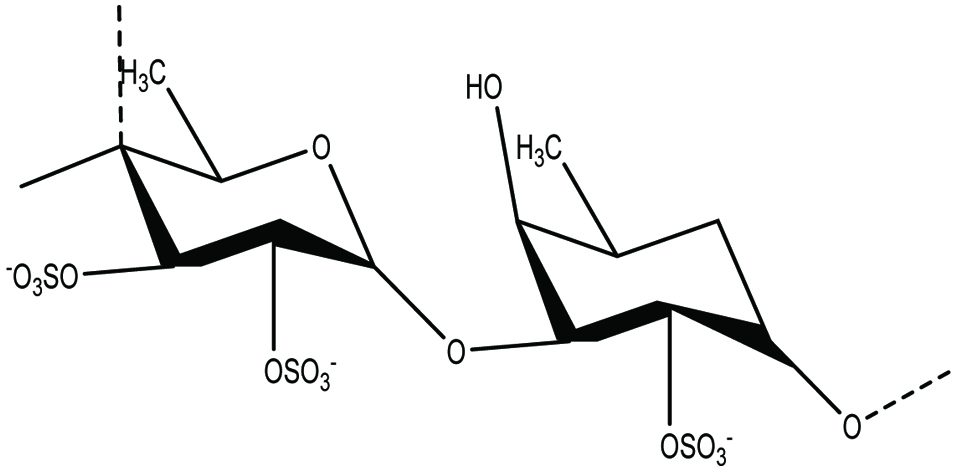
Chemical structure of fucoidan.
| Journal of Food Bioactives, ISSN 2637-8752 print, 2637-8779 online |
| Journal website www.isnff-jfb.com |
Review
Volume 2, Number , June 2018, pages 58-81
Bioactives in seaweeds, algae, and fungi and their role in health promotion
Figures

Chemical structure of fucoidan.
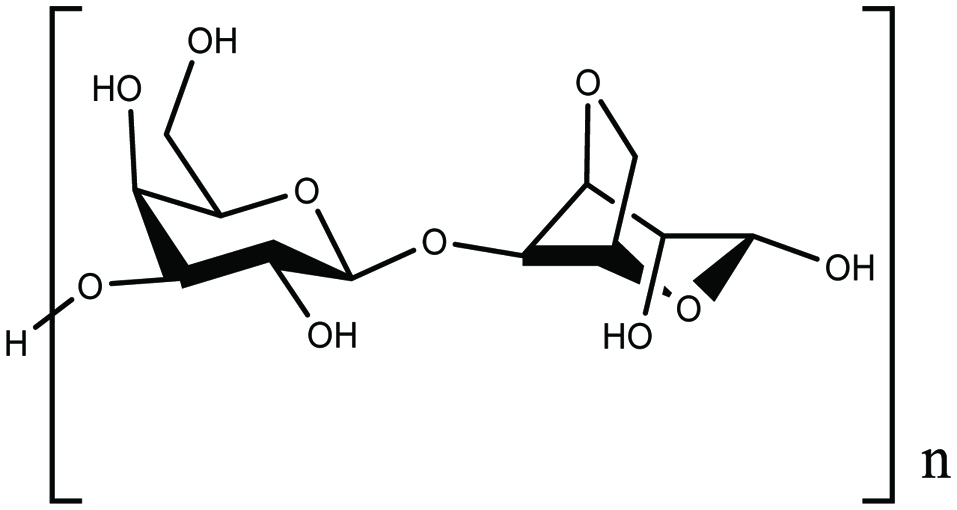
Chemical structure of agar.
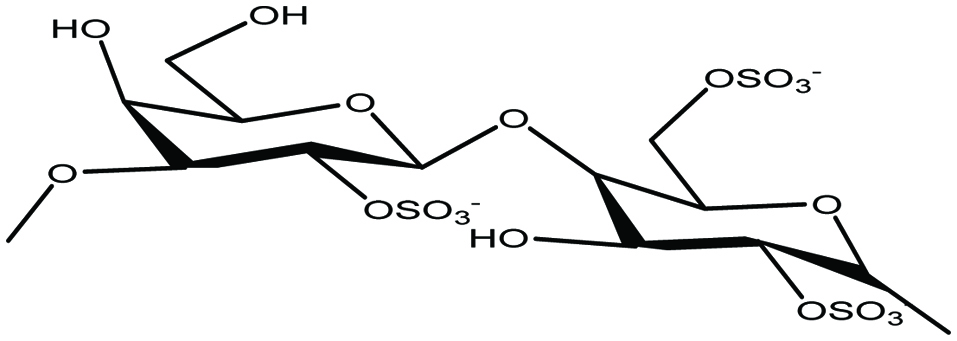
Chemical structure of carrageenan.
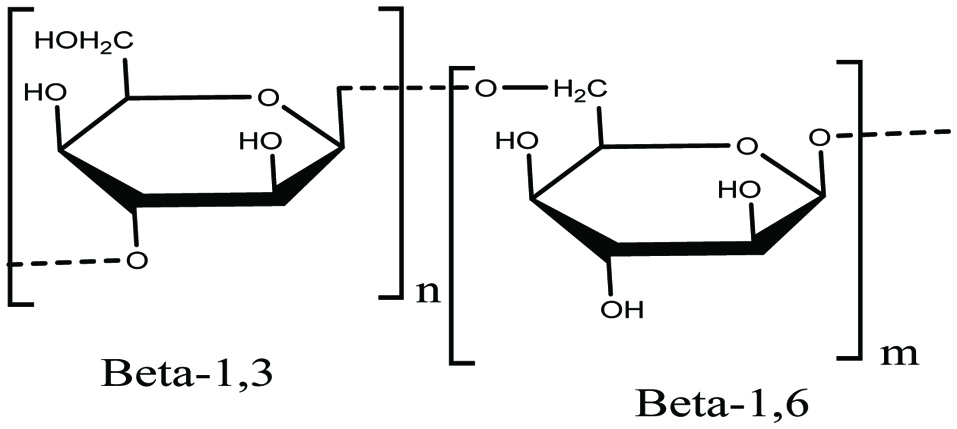
Chemical structure of lamarinin.

Chemical structure of alginate.
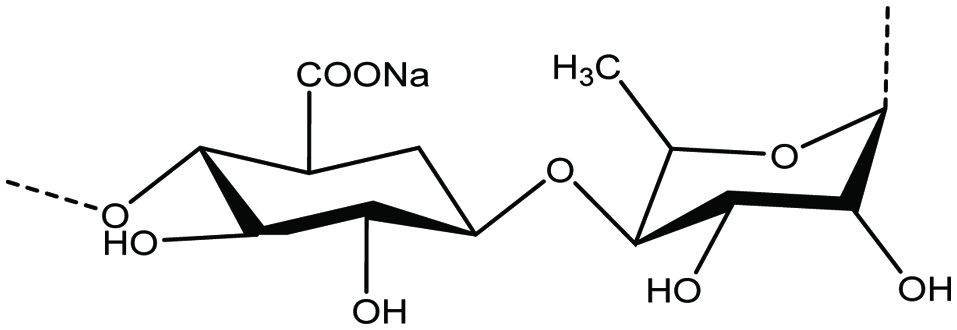
Chemical structure of ulvan.
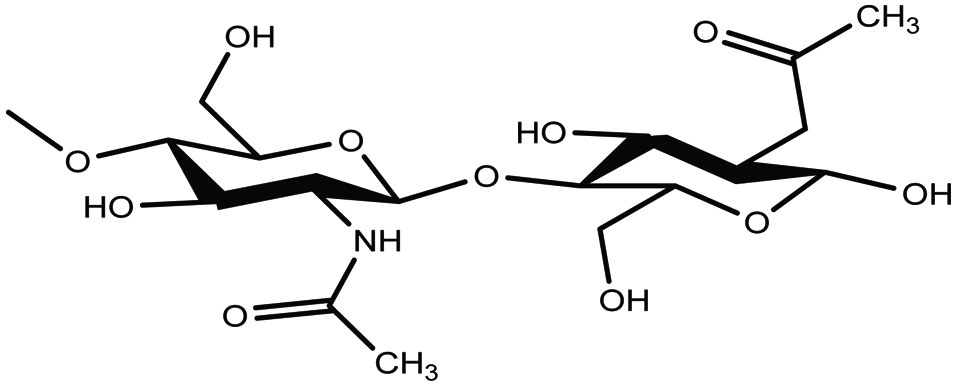
Chemical structure of chitin.
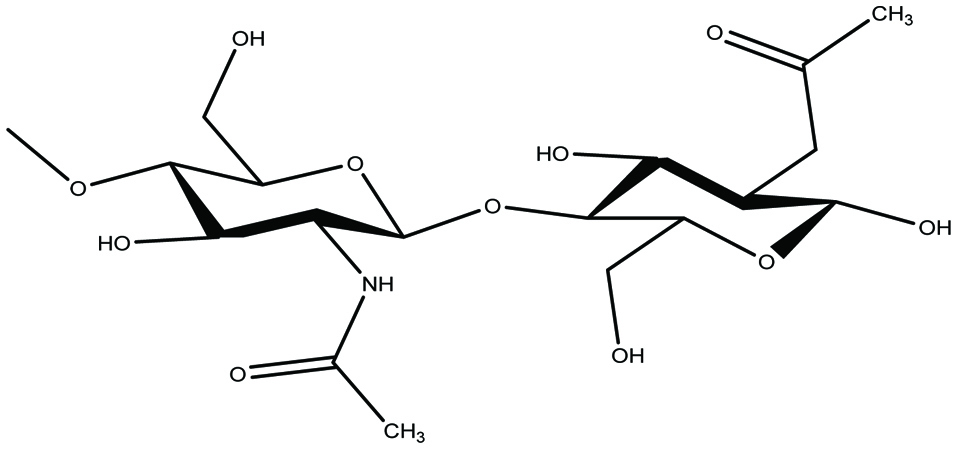
Chemical structure of chitosan.
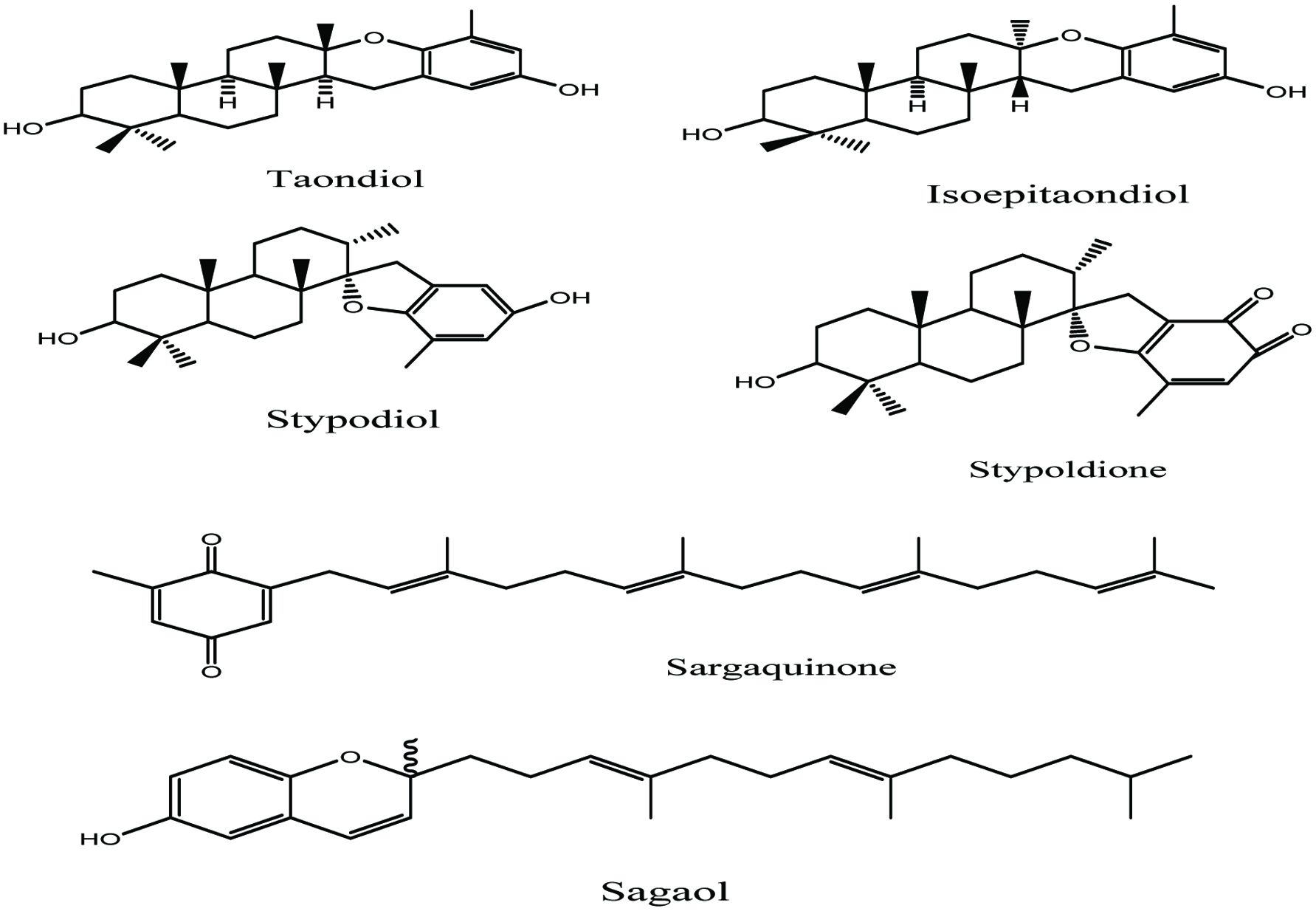
Isolated secondary metabolites from marine Alga T. atomaria (Nahas et al. 2007).
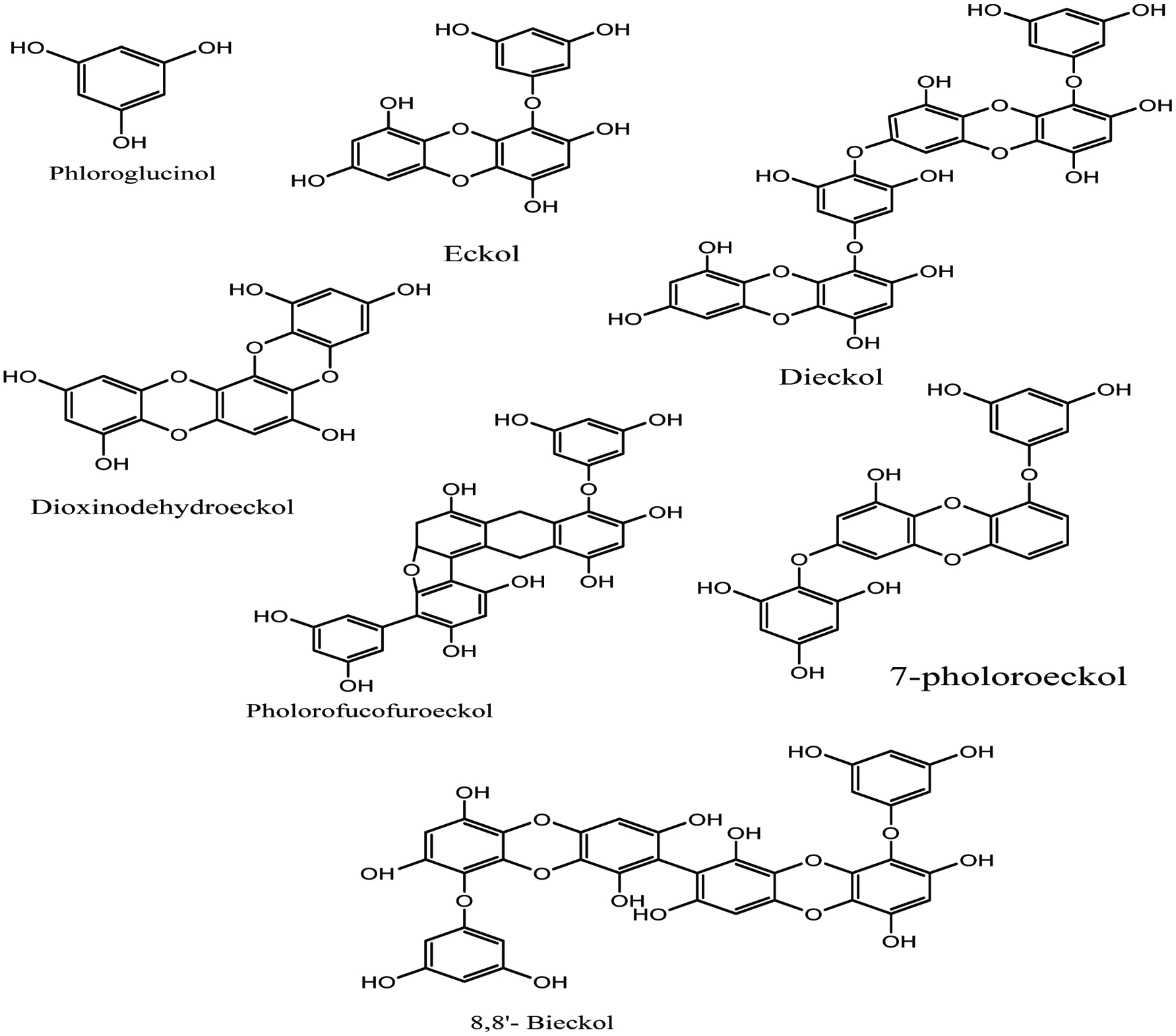
Isolated pholorotanins derivatives from various brown algae.

Chemical structure of beta-carotene.

Chemical structure of fucoxanthin.

Chemical structure of astaxanthin.

Chemical structure of canthaxanthin.

Chemical structure of lutein.

Chemical structure of zeaxanthin.
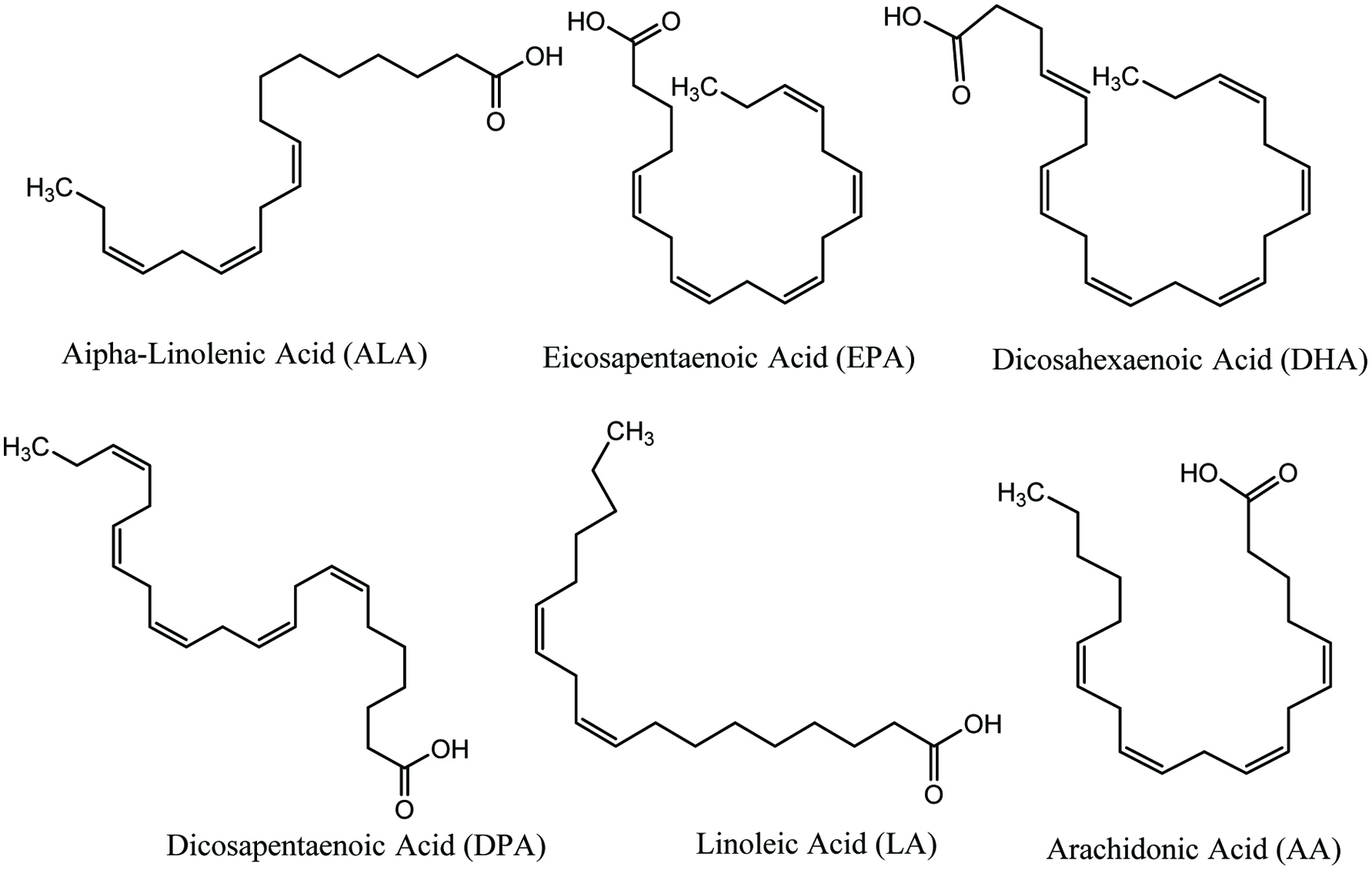
Isolated bioactive lipids from seaweeds and marine algae.
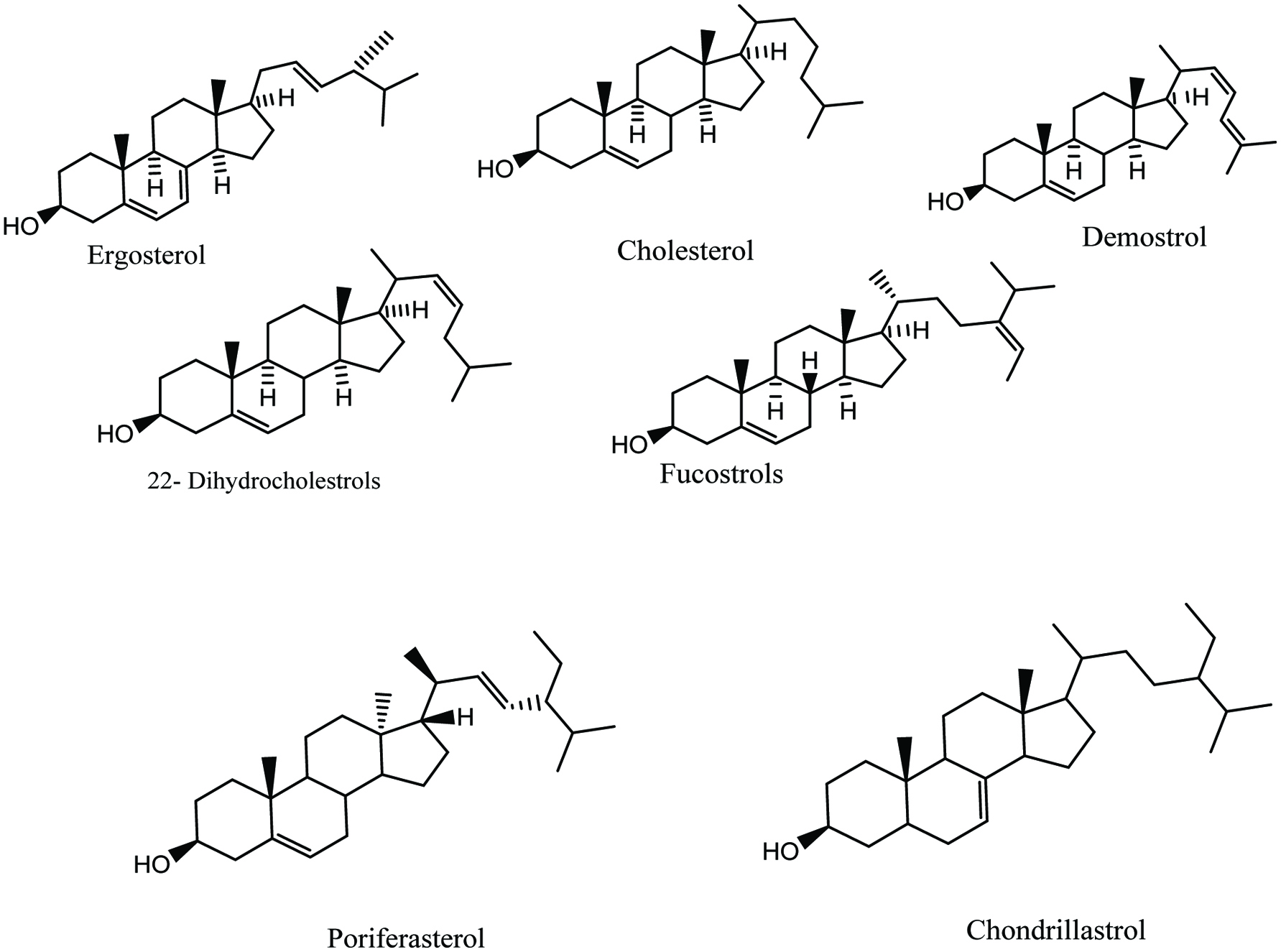
Isolated phytosterol from marine seaweeds and algae.
Tables
| Bioactive Carbohydrates | Sources | Functions in human health | References | ||
|---|---|---|---|---|---|
| Fucoidans | Turbinaria conoides, Fucus vesiculosis, Cladosiphono kamuranus, Laminaria japonica, and Undaria pinnatifida | Antiviral, antitumor, anticoagulant, antioxidant, neuroprotective, and antithrombotic, impact on the inflammatory and immune systems. | Ale et al. 2011; Anastyuk et al. 2012; Chattopadhyay et al. 2010; Hamed et al. 2015; Himaya and Kim 2015; Lee et al. 2011, 2012; Luo et al. 2009; Wang et al. 2009; Wijesekara et al. 2011; Thomas et al. 2010. | ||
| Agar | Gracilaria sp., Gracilaria cornea, Gracilaria dominguensis, Gigartina sp. and Gelidium sp. | Decrease blood sugar, Exert anti-aggregation effect on red blood cells, antioxidant, antitumor as well as antiviral activities, Inhibition of α-glucosidase and absorption effect of UV rays | Chen et al. 2005; FAO 2008; Fernandez et al. 1989; Freile-Pelegrin and Robledo 1997; Holdt and Kraan 2011; Mouradi Givernaud et al. 1992; Murata and Nakazoe 2001. | ||
| Lamarigin | Saccharina latissimi Laminaria digitata Laminaria hyperborea Laminaria sp. Fucus vesiculosus Ascophyllum nodosum Undaria pinnatifida | Effects on intestinal pH level, mucus structure, and short chain fatty acid production, tumour-inhibiting agent antibacterial, protection against severe irradiation, boosts the immune system through increasing the B cells and helper T cells, lowers systolic blood pressure and reduces cholesterol levels in serum, lower of total cholesterol levels, free cholesterol, lower of liver triglyceride and phospholipid | Bartsch et al. 2008; Deville et al. 2007; Freitas et al. 2015; Hamed et al. 2015; Haug and Jensen 1954, 1960; Hoffman et al. 1995; Holdt and Kraan 2011; Jensen and Haug 1956; MacArtain et al. 2007; Miao et al. 1999; Morrissey et al. 2001; Renn et al. 1994a, b. | ||
| Alginate | Brown algae | Metal chelator, decrease cholesterol level, exert anti-hypertension effect, Prevent toxic chemicals absorption. | Gupta and Abu- Ghannam 2011; Holdt and Kiraan 2011; Kim and Lee 2008; Murata & Nakazoe 2001; Nishide and Uchida 2003. | ||
| Ulvan | Ulva lactuca, Ulva rigida, and Monostroma sp. | Anti-thrombotic activities; used for the treatment gastric ulcers, and acts as anti-influenza | Kaeffer et al. 1999; Lahaye 1998; Lahaye and Robic 2007; Nagaoka et al. 2003. | ||
| Porphyran | Red algae; Porphyridium and Nostac flegelliforme | Active antioxidants and anticoagulants; biological activities against Herpes simplex virus (HSV-1 and HSV-2); immunostimulator, a free radical collector and thus reduces blood lipids. | Hamed et al. 2015; Kanekiyo et al. 2007; Spolaore et al. 2006; Vo, et al. 2011. | ||
| Bioactive carotenoids | Sources | Health benefits | References |
|---|---|---|---|
| Beta-carotene | Dunaliella salina, Porphyra tenera | Prevent the onset of lung cancer, Prevent heart diseases, Provitamin A- activity, Skin protection from UV radiation, Antimutagenic. | Graham and Rosser 2000; Guedes et al. 2011; Himaya and Kim 2015; Kritchevsky 1999; Pangestuti and Kim 2011 |
| Fucoxanthin | Undaria pinnatifida, Hijikia fusiformis, Sargassum fulvellum and Laminaria japonica, | Inhibition intestinal enzyme, Prevent human breast cancer cells (MCF-7), the growth of human leukemia cells (HL-60), and Caco-2 human colon cancer cells, Anti-allergic activity and anti-obesity activity. | Freitas et al. 2015; Matsumoto et al. 2010; Miyashita 2014; Miyashita et al. 2011; Shahidi and Ambigaipalan 2015. |
| Astaxanthin | Haematococcus pluvialis | Prevent cancer, diabetic, heart and gastrovascular diseases, inhibits the growth of human prostate cancer cells, reduction in plasma levels of triglycerides, WAT size, fasting blood glucose, non-esterified fatty acids, and an increase in high-density lipoprotein cholesterol. | Chuyen and Eun 2015; Himaya and Kim 2015; Hussein et al. 2007; Machmudah et al. 2006; Sharoni et al. 2002; Tanaka et al. 1994. |
| Canthaxanthin | Chlorella vulgaris, Haematococcus pluvialis, Coelastrella striolata var. multistriata | Antioxidant activity, Anti-cancer activity, Antidiabetic activity, Anti-obesity property and anti-proliferative effects | Abe et al. 2007; Chuyen and Eun 2015; Tanaka et al. 1994 |
| Lutein | Porphyra tenera | Protects the eyes from oxidative stress, Acts as a filter of the blue light involved in macular degeneration and age-related cataract, Prevent heart diseases. | Alves-Rodrigues and Shao 2004; Granado et al. 2003; Hashimoto et al. 2012; Himaya and Kim 2015; Mimouni et al. 2012; Pangestuti and Kim 2011. |
| Zeaxanthin | P. cruentum, Haematococcus pluvialis, | Absorb damaging blue and near-ultraviolet light to protect the macula lutea from light-associated damage, Prevent heart diseases and liver protection | Chuyen and Eun 2015; Himaya and Kim 2015; Krinsky and Johnson 2005. |